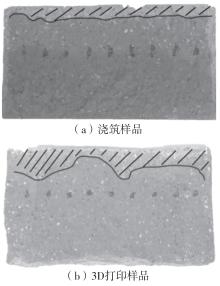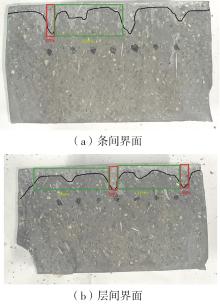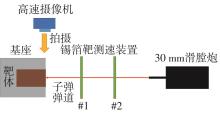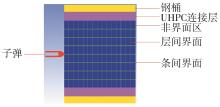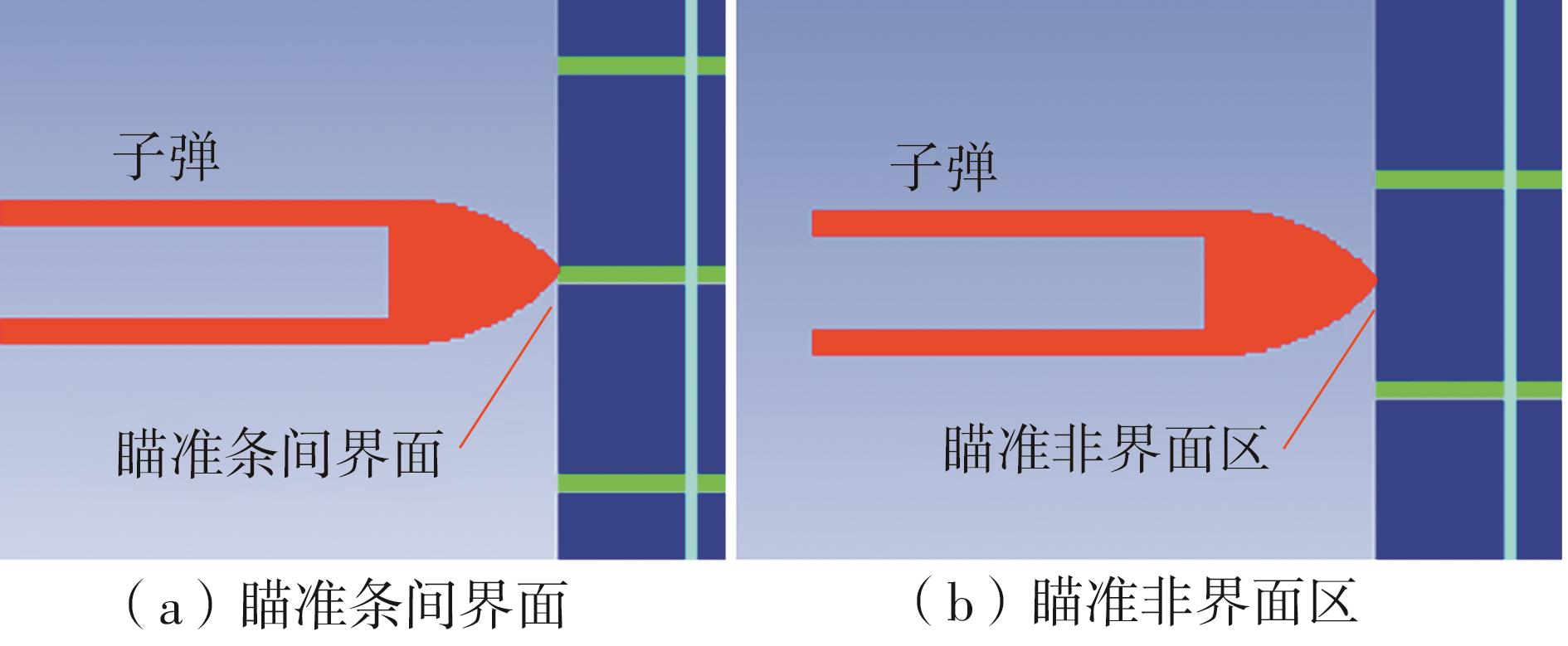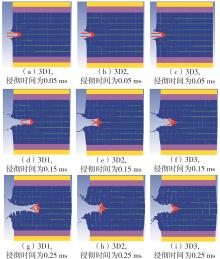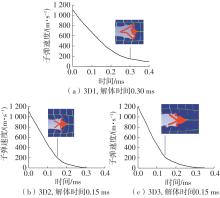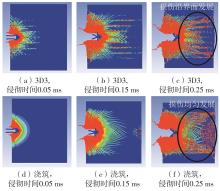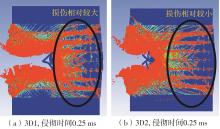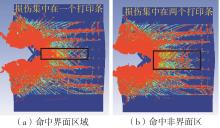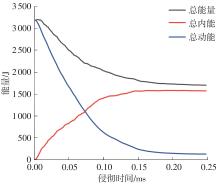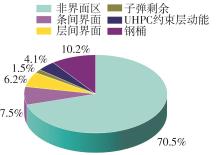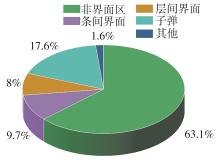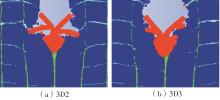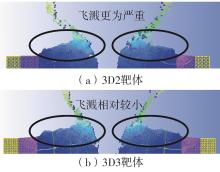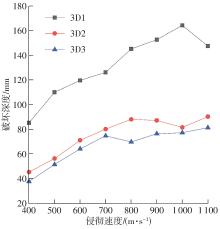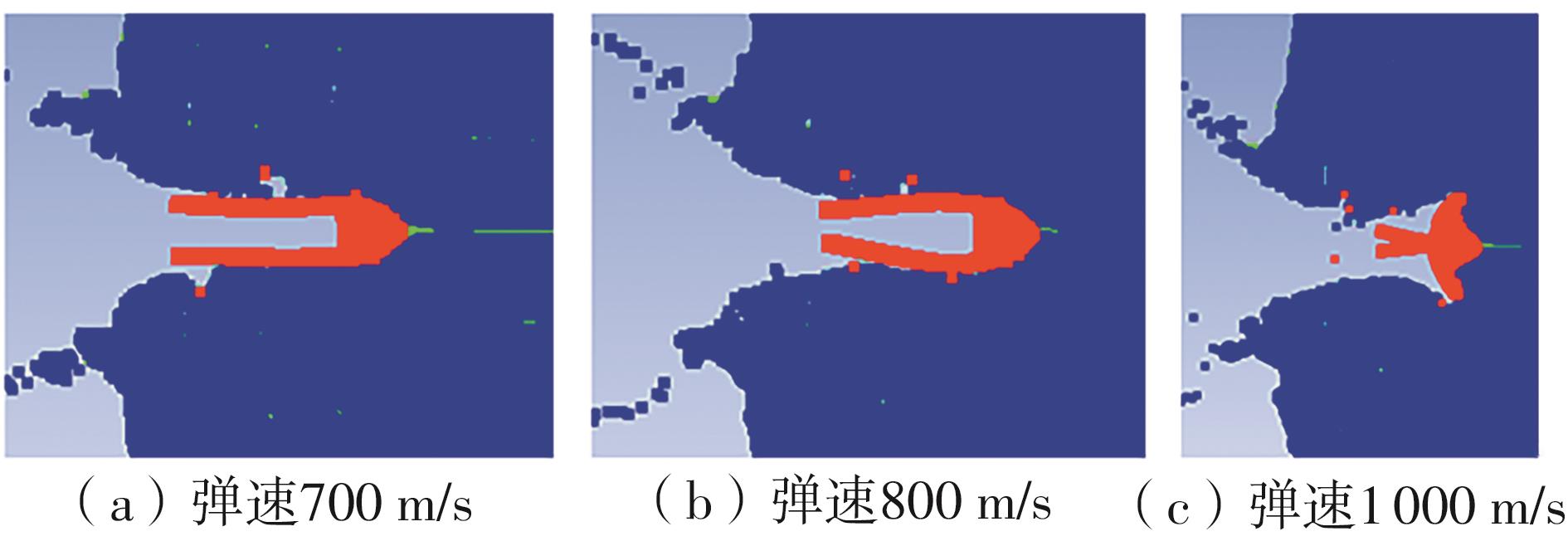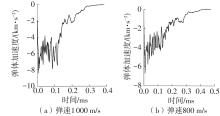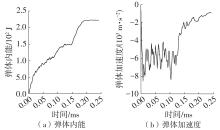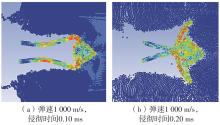Journal of South China University of Technology(Natural Science Edition) ›› 2025, Vol. 53 ›› Issue (8): 137-148.doi: 10.12141/j.issn.1000-565X.240451
• Materials Science & Technology • Previous Articles Next Articles
A Simulation Model of 3D Printed Concrete for Penetration Resistance
ZHOU Jiehang1,2, DU Longyu1, LAI Jianzhong1, YIN Xuexiang1, YANG Mingyu1
- 1.School of Materials Science and Engineering,Nanjing University of Science and Technology,Nanjing 210094,Jiangsu,China
2.Suzhou Concrete and Cement Products Research Institute Co. ,Ltd. ,Suzhou 215000,Jiangsu,China
-
Received:2024-11-25Online:2025-08-25Published:2025-01-24 -
Contact:赖建中(1978—),男,博士,教授,主要从事混凝土智能制造与超高性能混凝土技术研究。 E-mail:jzh-lai@163.com -
About author:周捷航(1996—),男,博士,主要从事3D打印混凝土研究。E-mail: zhoujiehang@163.com -
Supported by:the National Nature Science Foundation of China(52078253)
CLC Number:
Cite this article
ZHOU Jiehang, DU Longyu, LAI Jianzhong, YIN Xuexiang, YANG Mingyu. A Simulation Model of 3D Printed Concrete for Penetration Resistance[J]. Journal of South China University of Technology(Natural Science Edition), 2025, 53(8): 137-148.
share this article
| [1] | 朱彬荣,潘金龙,周震鑫,等 .3D打印高延性水泥基复合材料的单轴受拉和受压行为[J].硅酸盐学报,2021,49(5):844-854. |
| ZHU Binrong, PANG Jinlong, ZHOU Zhenxin,et al .Uniaxial tensile and compressive stress-strain behavior of 3D printed engineered cementitious composites[J].Journal of the Chinese Ceramic Society,2021,49(5):844-854 | |
| [2] | 叶俊宏,郑怡,余江滔,等 .3D打印纤维增强混凝土材料研究进展[J].硅酸盐学报,2021,49(11):2538-2548. |
| YE Junhong, ZHENG Yi, YU Jiangtao,et al .Research progress on 3D printable fiber reinforced concrete[J].Journal of the Chinese Ceramic Society,2021,49(11):2538-2548 | |
| [3] | DU L Y, ZHOU J H, LAI J Z .Dynamic damage behavior and anisotropic mechanism of 3D printed reinforced concrete subjected to penetration,[J].Construction and Building Materials,2025,458(10):139559/1-13. |
| [4] | YANG Y, WU C, LIU Z .Rate dependent behaviour of 3D printed ultra-high performance fibre-reinforced concrete under dynamic splitting tensile[J].Composite Structures,2023,309:116727/1-25. |
| [5] | YANG Y, WU C, LIU Z,et al .Characteristics of 3D-printing ultra-high performance fibre-reinforced concrete under impact loading[J].International Journal of Impact Engineering,2022,164:104205/1-22. |
| [6] | MA G, BAI G, WANG L,et al .Explosion resistance of 3D printing ultra-high performance concrete based on contact explosion tests[J].International Journal of Impact Engineering,2022,169:104316/1-15. |
| [7] | LIU J, LI S,FOX K,et al .3D concrete printing of bioinspired Bouligand structure: a study on impact resistance[J].Additive Manufacturing,2022,50:102544/1-20. |
| [8] | 尹雪祥,赖建中,周捷航,等 .超高性能混凝土梯度材料抗超高速侵彻性能数值模拟[J].硅酸盐学报,2021,49(11):2435-2449. |
| YIN Xuexiang, LAI Jianzhong, ZHOU Jiehang,et al .Numerical simulation on anti-hypervelocity penetration performance of ultra-high performance concrete gradient material [J].Journal of the Chinese Ceramic Society,2021,49(11):2435-2449 | |
| [9] | KHAN S A,KOC M .Numerical modelling and simulation for extrusion-based 3D concrete printing: the underlying physics, potential, and challenges[J].Results in Materials,2022,16:100337/1-7. |
| [10] | NGUYAN-VAN V, LI S, LIU J,et al .Modelling of 3D concrete printing process: a perspective on material and structural simulations[J].Additive Manufacturing,2023,61:103333/1-18. |
| [11] | VAN D H M, BESTER F, KRUGER J,et al .Mechanical characterisation for numerical simulation of extrusion-based 3D concrete printing[J].Journal of Building Engineering,2021,44:102944/1-15. |
| [12] | CHEN Y, ZHANG Y, XIE Y,et al .Unraveling pore structure alternations in 3D-printed geopolymer concrete and corresponding impacts on macro-properties[J].Additive Manufacturing,2022,59:103137/1-18. |
| [13] | DING T, WANG Z, LIU H,et al .Simulation on pull-out performance of steel bar from 3D-printed concrete[J].Engineering Structures,2023,283:115910/1-14. |
| [14] | 陈虹羽 .3D打印混凝土力学性能及壳体结构抗冲击性能研究[D].长沙:长沙理工大学,2020. |
| [15] | 岳健广,王健,吴瑶,等 .3D打印碳纤维混凝土断裂力学性能试验研究及数值模拟[J/OL].建筑结构学报.(2023-1-15)[2024-12-14].. |
| YUE Jianguang, WANG Jian, WU Yao,et al .Experimental study and numerical simulation of mechanical properties of 3D printed carbon fiber reinforced concrete[J/OL].Journal of Building Structures.(2023-1-15)[2024-12-14].. | |
| [16] | GENG Z, SHE W, ZUO W,et al .Layer-interface properties in 3D printed concrete:dual hierarchical structure and micromechanical characterization[J].Cement and Concrete Research,2020,138:106220/1-17. |
| [17] | WANG L, YANG Y, YAO L,et al .Interfacial bonding properties of 3D printed permanent formwork with the post-casted concrete[J].Cement and Concrete Composites,2022,128:104457/1-15. |
| [18] | WENG Y, LI M, ZHANG D,et al .Investigation of interlayer adhesion of 3D printable cementitious material from the aspect of printing process[J].Cement and Concrete Research,2021,143:106386/1-16. |
| [19] | DU L, ZHOU J, LAI J,et al .Effect of pore structure on durability and mechanical performance of 3D printed concrete[J].Construction and Building Materials, 2023,400:132581/1-12. |
| [20] | 孙晓燕,沈俊逸,王海龙,等 .3D打印混凝土永久模板叠合梁抗弯性能研究[J].土木工程学报, 2022,55(10):1-10. |
| SUN Xiaoyan, SHEN Junyi, WANG Hailong,et al .Bending behavior of composite beam with 3D printed concrete permanent formwork[J].China Civil Engineering Journal,2022,55(10):1-10. | |
| [21] | ZHOU J, LAI J, DU L,et al .Effect of directionally distributed steel fiber on static and dynamic properties of 3D printed cementitious composite[J].Construction and Building Materials,2022,318:125948/1-23. |
| [22] | 张海燕,唐国铭,过民龙,等 .回字形3D打印混凝土受压性能试验及数值模拟[J].硅酸盐通报, 2023,42(6):1980-1986,1995. |
| ZHANG Haiyan, TANG Guoming, GUO Minlong,et al .Tests and numerical simulation on compressive properties of 3D printing concrete along rectangular-ambulatory-plane path,[J].Bulletin of Chinese Ceramic Society,2023,42(6):1980-1986,1995. | |
| [23] | 李俊睿 .3D打印水泥基材料基本力学性能与数值模拟[D].南京:东南大学,2022. |
| [24] | 杨浩若 .侵彻和爆炸下超高性能水泥基复合材料的毁伤效应及数值模拟[D].南京:南京理工大学,2018. |
| [25] | 董赛阳 .3D打印功能梯度混凝土的制备及性能研究[D].南京:南京理工大学,2020. |
| [26] | 杨宇杰 .3D打印混凝土材料抗侵彻爆炸性能研究及数值模拟[D].南京:南京理工大学,2021. |
| [27] | 李宏基 .不同混凝土防护工程材料抗侵彻爆炸性能研究及数值模拟[D].南京:南京理工大学,2020. |
| [1] | LIU Guoyong, GAO Shize, ZHU Dongmei. Analysis of Extrusion Law of Large-Scale and Small-Scale Aluminum Profiles with Hollow Thin Wall for Rails [J]. Journal of South China University of Technology(Natural Science Edition), 2025, 53(5): 45-55. |
| [2] | DING Xiaobin, XIE Yuxuan, SHI Yu. Crack Extension Analysis of Rock-Like Material Based on the Improved Contact Model [J]. Journal of South China University of Technology(Natural Science Edition), 2024, 52(8): 146-158. |
| [3] | ZHANG Haiyan, MA Jinyi, WU Bo, et al. Effect of Recycled Fine Aggregate and Clay Brick Powder on Properties of 3D Printed Concrete [J]. Journal of South China University of Technology(Natural Science Edition), 2024, 52(3): 18-27. |
| [4] | LIU Xiumei, MA Xuemin, LI Beibei, et al. Simulated and Experimental Investigation into Coupled Wear of Cavitation and Erosion in Regulating Valves [J]. Journal of South China University of Technology(Natural Science Edition), 2024, 52(12): 109-118. |
| [5] | YU Mingquan, ZHAO Jiyun, MAN Jiaxiang, et al.. Study of Distribution Structure for High Water-Based Hydraulic Motor [J]. Journal of South China University of Technology(Natural Science Edition), 2023, 51(9): 19-29. |
| [6] | LU Zhimin, LI Bohang, TANG Wen, et al. Optimization Simulation of Ammonia Injection in SCR DeNO x System of Coal-Fired Power Plant [J]. Journal of South China University of Technology(Natural Science Edition), 2023, 51(8): 62-70. |
| [7] | LIU Dingping, ZHANG Xiangyang, CHEN Aihua, et al. Numerical Analysis of Performance of Cyclone-Tube Demister Based on Orthogonal Design [J]. Journal of South China University of Technology(Natural Science Edition), 2023, 51(6): 89-96. |
| [8] | MA Xiangjun, WANG Zhen, YAO Zhiqiang, et al. Numerical Simulation on Melt Flow Characteristics of UHMWPE in Eccentric Rotor Extruder [J]. Journal of South China University of Technology(Natural Science Edition), 2023, 51(5): 114-121. |
| [9] | DAI Gonglian, CHEN Kun, GE Hao, et al. Research on Numerical Simulation of Rail Non-contact Nondestructive Testing Technology [J]. Journal of South China University of Technology(Natural Science Edition), 2023, 51(4): 44-52. |
| [10] | LI Shuxun, HU Yinggang, LI Cheng, et al. Optimization of Body Profile Line of Axial Flow Control Valve Based on Surrogate Model [J]. Journal of South China University of Technology(Natural Science Edition), 2023, 51(3): 41-52. |
| [11] | TIAN Lifeng, GUO Meiqi, DING Hao, et al. On Aero-optical Effect and Control of Supersonic Boundary Layer [J]. Journal of South China University of Technology(Natural Science Edition), 2023, 51(2): 137-146. |
| [12] | YU Mingquan, ZHAO Jiyun, MAN Jiaxiang, et al.. Study on Flow Distribution Mechanism of Low Speed High Torque Hydraulic Motor [J]. Journal of South China University of Technology(Natural Science Edition), 2023, 51(11): 101-109. |
| [13] | DU Jianming, FANG Qian , WANG Gan, et al. Characteristics of Transient Pressure and Pressure Gradient of a High-Speed Train Travelling Through a Double-Track Tunnel [J]. Journal of South China University of Technology(Natural Science Edition), 2022, 50(9): 58-68. |
| [14] | GONG Nan, LI Peizhen, HE Xuming. Design of an Innovative Eddy Current Replaceable Coupling Beam and Its Numerical Analysis [J]. Journal of South China University of Technology(Natural Science Edition), 2022, 50(7): 25-34. |
| [15] | DU Jianming, FANG Qian, LI Jianye. Influences of Train to Tunnel Area Ratio on Aerodynamic Pressure Characteristics of High-Speed Railway Tunnel Wall [J]. Journal of South China University of Technology(Natural Science Edition), 2022, 50(5): 56-64. |
| Viewed | ||||||
|
Full text |
|
|||||
|
Abstract |
|
|||||
